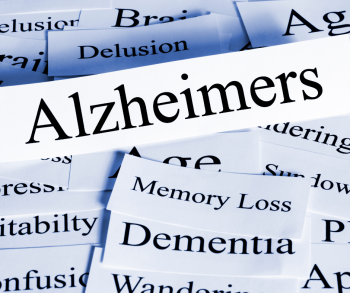Alzheimer's Caregiving: Home Safety Tips
January 23, 2025

Over time, people with Alzheimer’s disease will become less able to manage things around the home. For example, they may forget to turn off the oven or faucet, or even how to use the phone in an emergency. People with Alzheimer’s also may not see, smell, touch, hear, or taste things as they used to.
Caregivers can do many things to make the person’s home a safer place. The tips on this page cover a wide range of safety concerns that may arise — some may not apply to your current circumstances. It is important, however, to keep thinking about home safety as the person’s behavior and abilities change.
Creating a safer home for a person with Alzheimer’s
Go through the house room by room to identify potential problems and safety issues. First, correct any immediate dangers, such as loose stair railings and poor lighting, and then work on other ways to ensure the person will be as safe as possible at home.
To prevent falls, mark the edges of steps with brightly colored tape so the person can see the steps as they go up or down stairs.
- Use brightly colored signs or simple pictures to label the bathroom, bedroom, and kitchen.
- Limit the size and number of mirrors in your home and be specific about where you put them. Mirror images may confuse a person with Alzheimer’s.
- Make the walls a lighter color than the floor to create contrast. Avoid busy patterns.
- Install safety latches on storage cabinets and drawers designated for breakable or dangerous items.
- Set the water heater to 120°F to avoid scalding tap water.
- Label hot-water faucets red and cold-water faucets blue and/or write the words “hot” and “cold” near them.
- Pad any sharp corners on your furniture or replace or remove furniture with sharp corners.
- Place decals at eye level on sliding glass doors, picture windows, or furniture with large glass panels to identify the glass pane.
- Consider a "NO SOLICITING" sign for the front gate or door.
- Use smoke detectors and natural gas detectors and check their functioning and batteries frequently. People with Alzheimer’s may not be able to smell smoke or an unlit gas stove.
- Install nightlights and/or automatic light sensors.
- List emergency phone numbers (such as ambulance, poison control, and doctors) and the person’s address near all phones.
Preventing falls
Because bones generally get weaker as people age, a fall is more likely to cause a fracture in older adults. People with Alzheimer’s are at even greater risk of falling because they often experience changes in depth perception, which is the ability to judge how close or far away objects are. For example, a person with Alzheimer’s may think that a change in floor pattern (such as carpet to tile) is a step, causing them to stumble or trip.
You can make changes in the home of the person with Alzheimer’s to better ensure their safety. Read more about falls and fall prevention to learn about fall-related problems and find tips to help keep the person safe.
Store potentially dangerous items in a locked area or remove them from the home. These items can include:
- Prescription and over-the-counter medicines
- Alcohol
- Cleaning and household products, including paint thinner, matches, rubbing alcohol, and laundry detergent pods
- Poisonous plants
- Guns and other weapons, scissors, knives, power tools, and machinery
- Gasoline cans and other flammable items
Learn basic first aid in case the person gets sick or injured. Learn the Heimlich maneuver and CPR, and when to use each. Check with your local hospital or American Red Cross chapter about health and safety classes.
Kitchen safety
- Put signs near the oven, toaster, iron, and other things that get hot. The sign could say, “Stop!” or “Don’t Touch — Very Hot!” Be sure the sign is not so close that it could catch fire.
- Check foods in the refrigerator often. Throw out any that have gone bad.
- Add safety knobs and an automatic shut-off switch on the stove.
- Consider disconnecting the garbage disposal.
- Insert a drain trap in the kitchen sink to catch anything that may otherwise become lost or clog the plumbing.
- Remove artificial fruits and vegetables or food-shaped kitchen magnets, which may seem edible to the person with Alzheimer’s.
Bedroom safety
- Use a room monitoring device (like those used for infants) to alert you to any sounds indicating a fall or other need for help during the night.
- Remove portable space heaters. If you use portable fans, be sure that objects cannot be placed in the blades.
- Be cautious if using electric mattress pads, electric blankets, electric sheets, and heating pads, all of which can cause burns and fires. Keep controls out of reach of the person with Alzheimer’s.
- Install bed rails and other transfer or mobility aids.
Bathroom safety
- Remove small electrical appliances from the bathroom and cover electrical outlets.
- Put away or lock up items such as toothpaste, lotions, shampoos, soap, and perfume. They may look and smell like food to a person with Alzheimer’s.
- Install grab bars in the tub/shower. A grab bar in contrasting color to the wall is easier to see.
- Use a raised toilet seat with handrails or install grab bars beside the toilet.
- Place nonskid adhesive strips, decals, or mats in the tub and shower. If the bathroom is uncarpeted, consider placing these strips next to the tub, toilet, and sink.
- Use a foam rubber faucet cover in the tub, plastic shower stool, and hand-held shower head.
If you or your loved one is looking for Home Care in San Jose, CA, please call Familiar Surroundings Home Care.
Santa Clara County: (408) 979-9990
San Mateo County: (650) 353-9777
Santa Cruz County: (831) 480-3990

